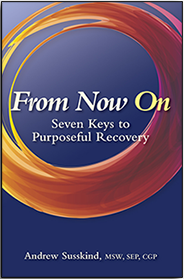Now that you are developing a fresh, new perspective to metabolize hurt, here are some specific action steps to apply to your repertoire of possibilities.
- Identify when you are feeling hurt. Because it’s often disguised as sadness, shame, disappointment, disillusionment or anger, it may go unrecognized. Keep a log of experiences when you feel hurt or possibly hurt someone else. Hurting others is inevitable, and being hurt is inevitable. It’s not the hurt that counts—it’s how you deal with it.
- Distinguish between resentment and hurt. Generally, resentment is something you feel toward others, and hurt is generally felt from others. Track hurt feelings and resentful feelings to build your awareness.
- Take full responsibility for all of your feelings and reactions paying special attention to feelings of hurt. Once you take stock of your side of the street, you will stay out of victim mode.
- Process the hurt without involving the other person. Sometimes you will be automatically drawn to try and work things out with the transgressor. It’s not their job to work it through with you. Talk to your therapist, sponsor or higher power for guidance as you process hurtful feelings.
- Name the shame that is often associated with hurt. It can be a slippery slope as you try and understand the other person’s role leaving you feeling “less than” or “not good enough.” Give yourself time to work through the shame and return to a more resilient state.
- Right-size yourself. Hurt will typically take you to a one-up or one-down position, but condescension and victimhood will only backfire leaving you even more isolated. Instead, practice Radical Compassion for yourself and the other person which will help you move toward greater connection to self, others and your higher power.
- Practice gratitude for this opportunity to learn about yourself. Hold the other person in positive regard as a teacher.
- Look at ways that you are taking away support from yourself. For instance, you might be obsessing about the hurtful incident which takes the focus away from you processing the hurt feelings.
- Reinstate support to yourself with nourishing choices such as mindful self-compassion, increased contact with emotionally-reliable people and journaling.
Many of you have been taught from a young age to work things out with the person who hurt you, but this is not the starting gate. These suggested strategies offer an alternative way to heal hurt from the inside out. Of course it may be helpful at some point to talk to the other person once you have the chance to work things out within yourself, but this article offers a healing process not often considered in our culture. Invite trusted loved ones to your grown-up playground and see how this approach works for you over time.




